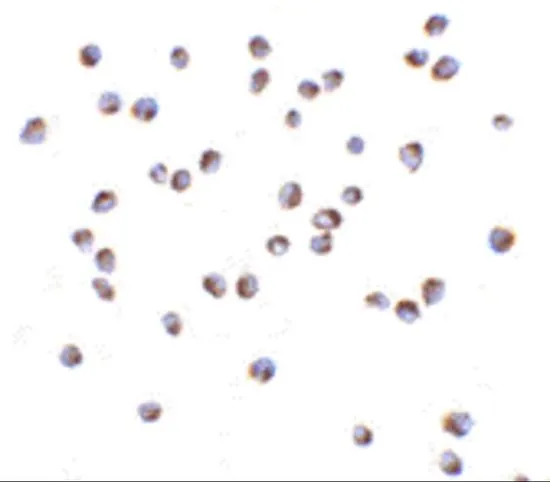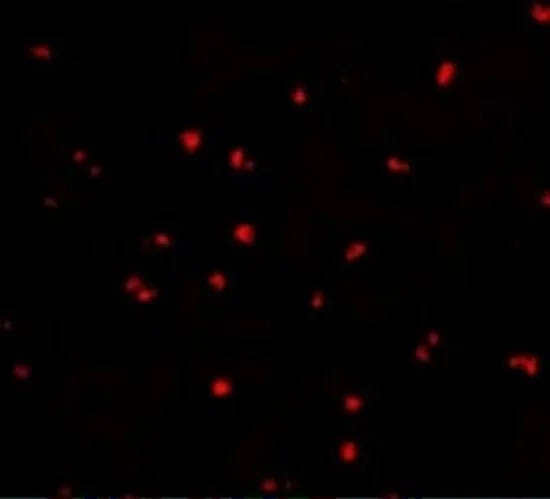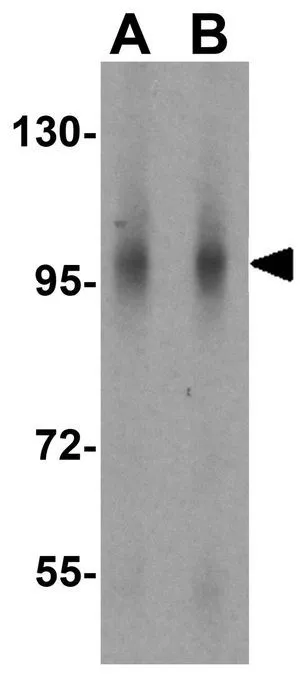
ICC/IF analysis of Jurkat cells using GTX31664 NOD2 antibody. Working concentration : 5 microg/ml
NOD2 antibody
GTX31664
ApplicationsImmunoFluorescence, Western Blot, ELISA, ImmunoCytoChemistry
Product group Antibodies
ReactivityHuman
TargetNOD2
Overview
- SupplierGeneTex
- Product NameNOD2 antibody
- Delivery Days Customer9
- Antibody SpecificityAt least four isoforms of NOD2 are known to exist; this antibody will only detect the longest isoform. NOD2 has no cross-reaction with NOD1.
- Application Supplier NoteWB: 1 - 2 microg/mL. *Optimal dilutions/concentrations should be determined by the researcher.Not tested in other applications.
- ApplicationsImmunoFluorescence, Western Blot, ELISA, ImmunoCytoChemistry
- CertificationResearch Use Only
- ClonalityPolyclonal
- Concentration1 mg/ml
- ConjugateUnconjugated
- Gene ID64127
- Target nameNOD2
- Target descriptionnucleotide binding oligomerization domain containing 2
- Target synonymsACUG; BLAU; BLAUS; CARD15; caspase recruitment domain family, member 15; caspase recruitment domain protein 15; caspase recruitment domain-containing protein 15; CD; CLR16.3; IBD1; inflammatory bowel disease protein 1; NLR family, CARD domain containing 2; NLRC2; NOD2B; NOD-like receptor C2; nucleotide-binding oligomerization domain 2; nucleotide-binding oligomerization domain, leucine rich repeat and CARD domain containing 2; nucleotide-binding oligomerization domain-containing protein 2; PSORAS1; YAOS
- HostRabbit
- IsotypeIgG
- Protein IDQ9HC29
- Protein NameNucleotide-binding oligomerization domain-containing protein 2
- Scientific DescriptionThis gene is a member of the Nod1/Apaf-1 family and encodes a protein with two caspase recruitment (CARD) domains and six leucine-rich repeats (LRRs). The protein is primarily expressed in the peripheral blood leukocytes. It plays a role in the immune response to intracellular bacterial lipopolysaccharides (LPS) by recognizing the muramyl dipeptide (MDP) derived from them and activating the NFKB protein. Mutations in this gene have been associated with Crohn disease and Blau syndrome. [provided by RefSeq, Jul 2008]
- ReactivityHuman
- Storage Instruction-20°C or -80°C,2°C to 8°C
- UNSPSC12352203


